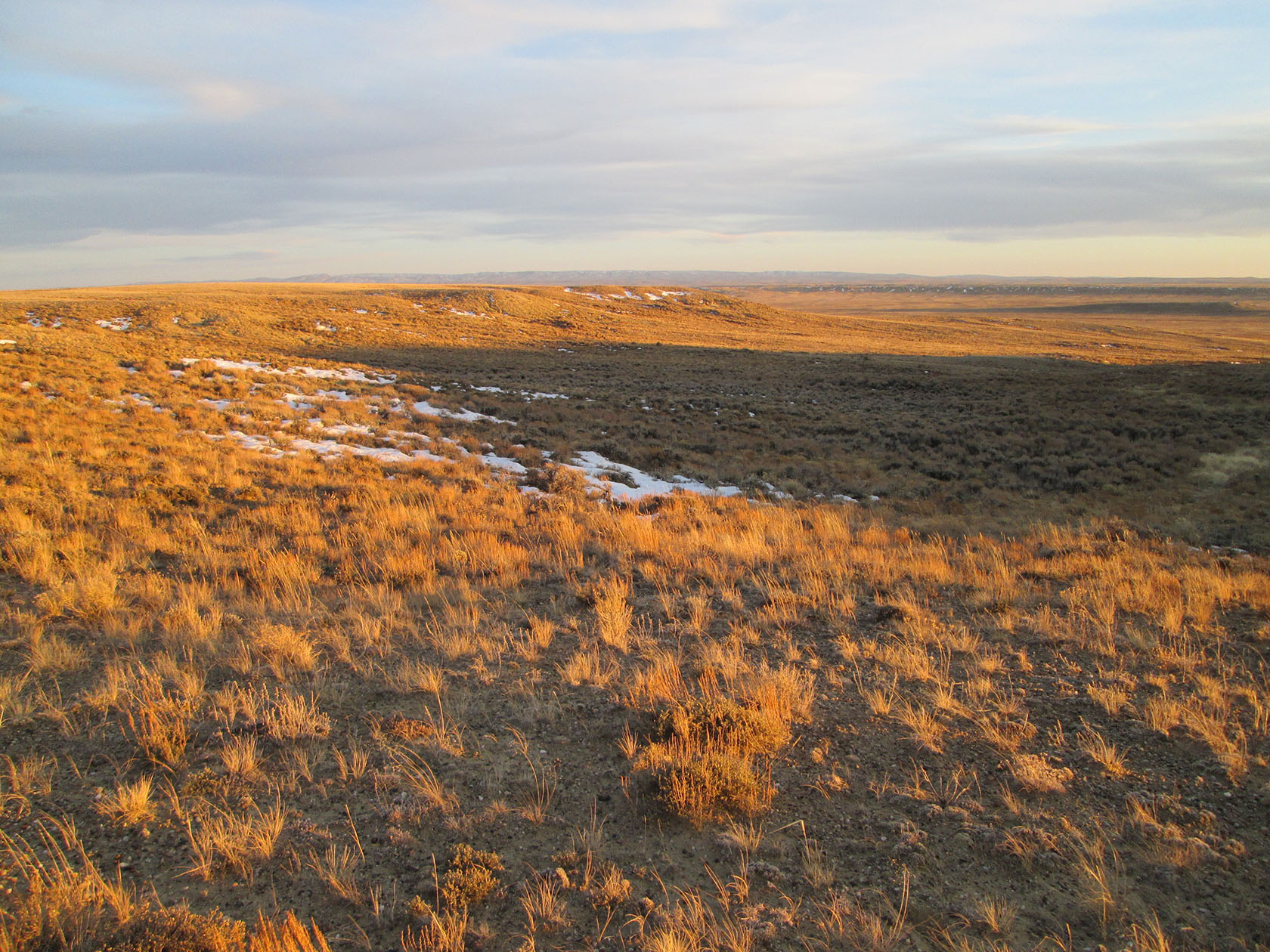
New Sundance Mesa Easement Expands Protection to 4,800 Acres
In a substantial gain for land conservation, the Green River Valley Program of the Jackson Hole Land Trust is excited to announce the completion of the Sundance Mesa II conservation easement in the Great Divide Basin. Sundance Mesa sits in eastern Sweetwater County and covers 3,040 acres of exceptional Red Desert terrain 8 miles northeast of Creston Junction and 20 miles west of Rawlins. A fully donated conservation easement, the newly protected property expands on previous conservation projects to secure an extensive mosaic of habitats, pristine open spaces, and livestock grazing in a unique ecological area facing ongoing development pressures.
A mix of sagebrush steppe, desert shrubland, grasslands, and a pond system, Sundance Mesa II adjoins the 1,760 acres Sundance Mesa I conservation easement network established in 2011, bringing the total area of protection to 4,800 acres. The easements sit at the top of a remote mesa north of Interstate 80 amidst a checkerboard of BLM and private lands within the Greater South Pass Sage-Grouse Core Area. The easements ensure vital habitat connectivity and conservation security for yearlong use by mule deer, elk, and pronghorn.
Landowners David Welborn and Ann Hunter-Welborn partnered with conservationist Frank Maurer to put the property under easement to protect wildlife habitat from both current development threats and the long-term impacts of climate change. “It’s been a long slog,” according to David Welborn, but the constant articles and reports he sees about sage-grouse declines motivated him to seek protection for the land. “I have a desire and appreciation for the habitat, especially for sage-grouse,” he reflected.
After years of pursuing ways to protect the landscape, Frank Maurer connected the Welborns with the property. “Years ago, I came across the country to Wyoming and was amazed by seeing pronghorn along the highway and was very impressed,” Frank said. Once he learned there were several sage-grouse leks in the area, he was further motivated to protect the pristine habitat, adding, “I’m exceedingly pleased after a long time of patience and hard work it has gotten to this point.” Looking to the future, Frank anticipates that Wyoming will become more attractive for people to move to and that “Our fellow creatures are being threatened by humans.”
Beyond the landowners’ compassionate conservation easement donation, the ranch supports the region’s agricultural heritage through livestock grazing and has made strides in wildlife habitat improvements with wildlife-friendly fencing and wildlife water guzzlers. Maintaining the ecological function of these easements will prove critical as a variety of development pressures continue to occur on private and public lands around the conservation easements.
“The significance of permanently protecting more than 3,000 acres of the Great Divide Basin cannot be understated,” said Green River Valley Program Director Kerry Gold. “This piece of the Red Desert is a substantial gain in the conservation of this unique high desert ecosystem facing pressure from different types of development. Keeping the land open for ranching in the future protects the character that we who live in Wyoming deeply value, and the landowners’ generous donation to the Green River Valley Program secures a lasting conservation legacy for the state.”
The easement would not have been possible without the landowners’ generous donation and commitment to conservation.